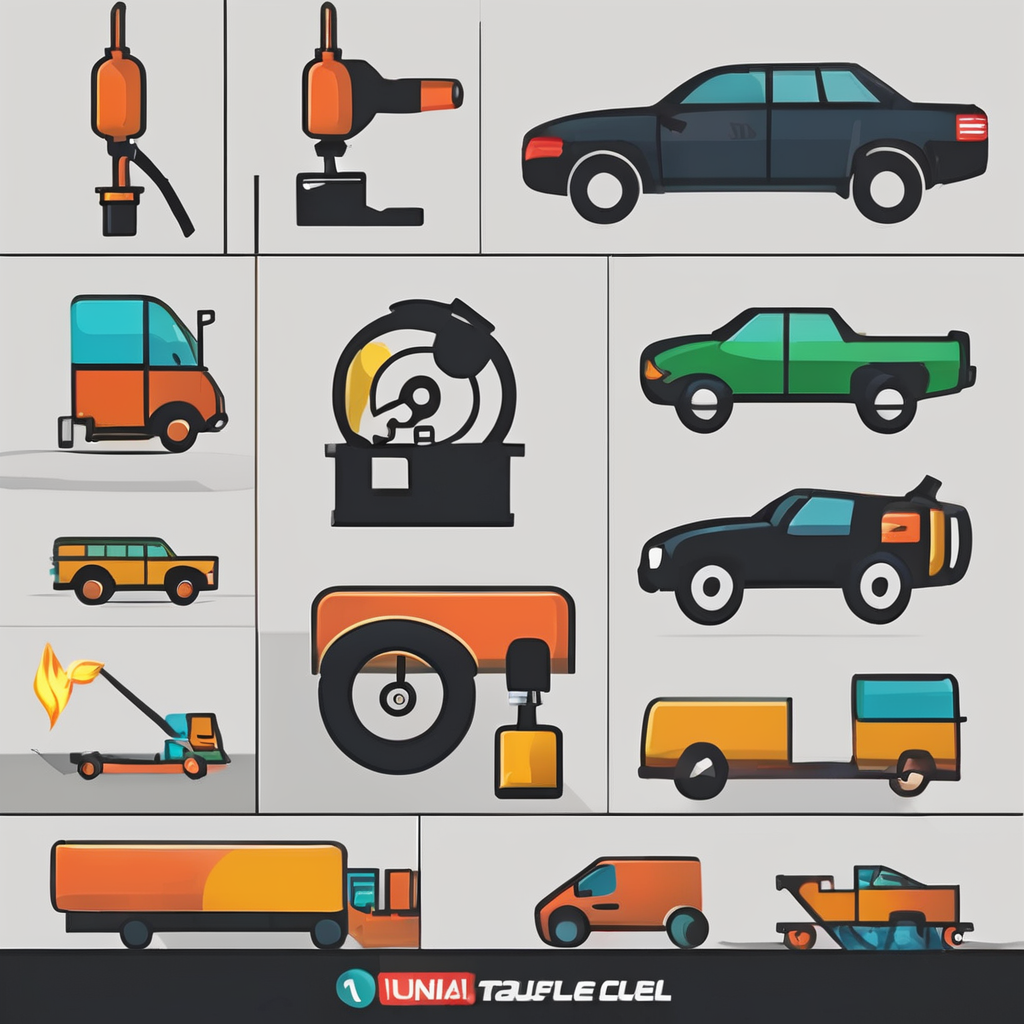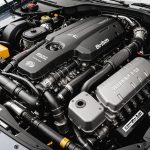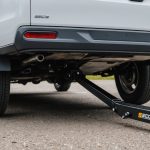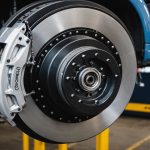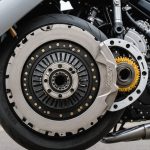Understanding Adaptive Cruise Control
Adaptive cruise control (ACC) is a modern driving technology that significantly enhances driving comfort and safety. Unlike traditional cruise control, which maintains a set speed, adaptive cruise control automatically adjusts the vehicle’s speed to maintain a safe distance from vehicles ahead. This system uses sensors, such as radar or cameras, to monitor traffic conditions, ensuring a smoother and more responsive driving experience.
Differences from Traditional Systems
Traditional cruise control systems only keep the vehicle at a constant speed as set by the driver, without considering the flow of surrounding traffic. In contrast, adaptive cruise control offers added features such as advanced traffic sensing capabilities. These features allow vehicles to adapt to varying speeds, stopping when necessary, and resuming once the path clears, thus decreasing driver workload and potential fatigue during extended drives.
Also to read : Ultimate guide to premium soundproofing solutions for your british luxury car”s engine bay
Benefits of Retrofitting Classic Cars
Integrating modern technology like adaptive cruise control into classic cars can transform their usability and safety. For vintage car enthusiasts, retrofitting offers several benefits:
- Enhanced driving comfort and safety
- Increased value and functionality of the vehicle
- Preserving the classic aesthetic while enjoying contemporary convenience
Retrofitting classic cars with such technological features allows for a harmonious blend of nostalgia and modernity, providing a unique driving experience that takes full advantage of technological advancements.
In the same genre : Mastering active noise cancellation in your british luxury sedan: the ultimate guide to optimal settings
Assessing Compatibility with Classic British Cars
The compatibility of adaptive cruise control systems for classic British cars hinges on several key factors. Before considering a retrofit, assess the car’s electrical system. Many vintage models lack modern electrical architecture, making integration more challenging. Additionally, examine the vehicle’s braking and steering systems to ensure they can handle the demands of modern technology. Compatibility can vary significantly between models, so it’s important to conduct a thorough evaluation.
Certain British models like the Jaguar E-Type, Austin Mini, and Triumph Spitfire are more commonly suited for adaptive cruise control installation due to their structural and electronic potential. These cars often have aftermarket support, facilitating easier adaptation of modern driving technology.
To assess technical compatibility, employ an evaluation checklist. This should include checks for electrical system capacity, space for sensor installation, and structural modifications that might be necessary. Any retrofit project on classic cars should first establish a roadmap for addressing potential limitations.
Understanding vehicle-specific requirements and proactively adapting systems can significantly ease the integration of adaptive cruise control into classic cars. Compatibility assessments become pivotal in ensuring a balanced blend of nostalgia with modern innovation.
Necessary Tools and Parts for Installation
Understanding the essential installation tools and parts required for retrofitting adaptive cruise control systems is crucial for a seamless process. The installation typically demands basic automotive tools like screwdrivers, spanners, and wrenches. More specifically, equipment such as a multimeter for electrical testing, wire crimpers for secure connections, and an OBD-II scanner for system diagnostics are indispensable.
When considering the adaptive cruise control parts, it’s important to choose the right types of systems available in the market. Options range from simple radar-based systems to sophisticated camera-enhanced models. Each offers distinct levels of modern driving technology compatibility, tailored to specific vehicle needs and configurations.
Retrofitting kits designed specifically for classic British cars are highly recommended. Brands offering comprehensive kits ensure that all necessary components, from sensors to specialised brackets, align with classic vehicle architecture. These kits often simplify the retrofit process by being model-specific, thus circumventing potential compatibility issues.
By selecting the correct tools and tailored kits, integrating adaptive cruise control becomes significantly less daunting, ultimately enhancing the capabilities and safety of your vintage vehicle while smoothly blending historical charm with technological progression.
Step-by-Step Installation Process
When installing adaptive cruise control, a meticulous approach can simplify the entire process. Follow these guidance steps for a successful retrofit.
Preparing Your Vehicle
Thoroughly inspect your car’s existing setup. Before beginning, ensure your vehicle is parked on a level surface. Disconnect the battery to avoid electrical mishaps, ensuring safety throughout the installation process. Checking the vehicle’s compatibility beforehand is crucial to guarantee seamless integration.
Installing the Hardware
Mount the cruise control components securely using brackets designed for your specific model. Carefully follow the manufacturer’s instructions. Connect sensors to optimal positions for clear traffic monitoring. Integrate the system with the car’s electrical network. Proper wiring is essential; use a multimeter to verify connections.
Software Calibration
Once hardware installation is complete, calibrating the software is crucial. This step ensures the system responds correctly to road conditions. Follow the guide provided to program the adaptive cruise control system. Testing on a safe, open road is vital to adjust settings and validate performance. This process helps fine-tune the system, ensuring it meets the demands of classic car dynamics while enhancing overall driving comfort.
Safety Precautions and Best Practices
When installing adaptive cruise control in classic cars, it’s essential to adhere to installation safety protocols to safeguard both the vehicle and the installer. Begin by ensuring the workspace is clean and well-lit, to minimise potential hazards. Always wear safety gear such as gloves and goggles, to protect against electrical sparks and sharp edges.
Prior to installation, disconnect the vehicle battery to prevent electrical shorts. Verify all tools are functioning correctly, and use non-conductive materials when working with electrical systems. Refrain from rushing the process, as hasty installations often lead to common mistakes that compromise system functionality.
Best practices suggest double-checking all wiring and connections before powering the vehicle. Ensuring wires are secured and avoiding tangled or excessive wiring can prevent future malfunctions. Regular maintenance checks post-installation are crucial to sustaining the system’s efficiency. Consult the user manual for any routine tests to confirm system reliability.
Remember that vehicle performance can fluctuate with new technology integrations. Monitor system performance consistently. Overlooking minor discrepancies can lead to larger issues over time. Proper installation and adherence to these practices not only enhance safety but also prolong the life and efficiency of your adaptive cruise control system.
Troubleshooting Common Issues
Adding adaptive cruise control to a classic car can sometimes lead to issues after installation. Addressing these efficiently ensures optimal system functionality and driving satisfaction.
Identifying Common Problems
Common problems include erratic sensor behavior and faulty wiring. Erratic sensors can often cause unexpected halts or acceleration due to misreading the surrounding traffic. Faulty wiring may result from poor connections or improper integration into the vehicle’s electrical system.
Frequently Observed Improper Installations
Signs of improper installation include frequent error codes on dashboards or unusual vehicle responses to traffic conditions. These could indicate misaligned sensors or incorrect software calibration. Regularly check the system and resolve these signs promptly to avoid larger issues.
Maintenance Tips and Solutions
Routine maintenance is crucial. Troubleshooting begins with ensuring sensors are clean and unobstructed. Dust or debris can impair their accuracy. Check connections and reinforce any loose wires, ensuring they’re secure and tangled-free. Occasionally recalibrate the software to adapt to environmental changes and maintain system efficiency.
In Practice
Consult the vehicle’s retrofit manual and seek professional advice if issues persist. Keeping a detailed maintenance log can help track problems and patterns over time. This proactive approach not only resolves issues swiftly but also enhances the longevity of your retrofitted system.
Legal Considerations and Compliance
When retrofitting classic cars with adaptive cruise control, understanding the legal compliance landscape is crucial. Many regions have specific laws on vehicle modifications, which may influence how adaptations affect your car’s legality on the road.
In the UK, any modification that alters the vehicle’s fundamental characteristics needs to comply with legal standards. Retrofitting technology like adaptive cruise control might require thorough inspections post-installation to ensure compliance with road safety regulations.
Notifying your insurance provider about such modifications is essential. Adjustments in vehicle modifications, like adding adaptive cruise control, can impact insurance terms, potentially altering coverage or premiums. Failing to report modifications could result in a lapse of coverage during claims.
Additionally, these modifications may affect vehicle registration processes. It’s advisable to consult with local authorities to understand how installing modern driving technology might influence periodic inspections and registration validity.
It’s critical to align modifications with regulations to avoid violations that could lead to fines or vehicle impoundment. Engaging with specialists familiar with these regulatory frameworks can facilitate smoother compliance pathways, ensuring your classic vehicle remains safely and legally on the road after its technological upgrade.
Performance Impact and User Experience
Implementing adaptive cruise control in classic cars can profoundly alter the driving experience. Users often notice a smoother drive due to the system’s ability to automatically adjust speed according to traffic flow, enhancing overall driving comfort. Unlike traditional systems, adaptive cruise control maintains distance from vehicles ahead, creating a less stressful driving environment, particularly during heavy traffic or long journeys.
While modern driving technology introduces many benefits, it may also affect a car’s performance metrics. For example, some drivers report improvements in fuel efficiency, thanks to the system’s capability to optimise speed and limit sudden stops or accelerations. This eco-friendly benefit not only reduces fuel consumption but also minimises wear and tear on the vehicle.
Nevertheless, the user experience can vary based on the specific classic car model and the adaptive cruise control system used. Users have expressed positive experiences with both the ease of navigation and the enhanced safety features provided. However, it’s crucial to consider how the integration of modern technology could impact the vehicle’s inherent characteristics, such as its traditional acoustics or manual handling feel, which may require some adjustment for vintage automobile enthusiasts.
